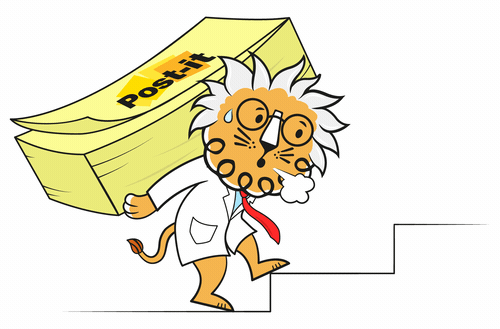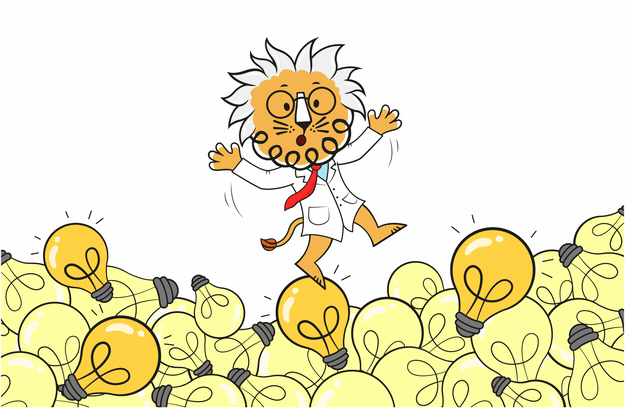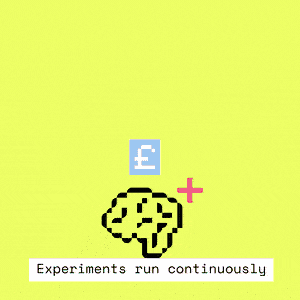Experiment, Especially if it's Cheesy! - Leon! Animation Studio
Some of our most successful 2D animations haven't been very innovative at all.
But instead, accidents.
Innovation tends to emerge when a unique mind struggles over a unique problem and eventually gains a unique insight, often from entirely unrelated circumstances. A good example?
How about the apple that bopped Newton on the head?
Of course, there's some dispute about whether the apple actually hit him, but there definitely was an apple. That apple fell, and it fell straight down.
Not sideways or up but down. That simple detail gave Newton the insight he needed to create his Law of Gravity. At the time, he'd been pondering the forces of nature.
Unique mind. Pondering a Unique problem. Met with Unique circumstances that generated an insight.
The Post-It
The story of the Post-It, however, is parallel but different.
Dr Spencer Silver, a scientist working for 3M, stumbled across an adhesive that you could lightly stick and remove to surfaces without damaging the bonding surfaces. In other words, in their search for "bigger, stronger, tougher adhesive", they'd stumbled across one with a "removability" characteristic.
His invention didn't stick at first (see what I did there?) as there was no apparent use. He picked up the monicker "Mr Persistent" because, despite the apparent uselessness of his adhesive, he continued to tout its positives.
Enter Art Fry- The Choir Coordinator
Eventually, Art Fry (another scientist at 3M) would find a need for a bookmark that he could stick to the pages of a book without damaging the pages. He was the church choir leader and often used scraps of paper to mark the hymns they'd be practising.
Every weekend, however, all of the scraps would be on the ground, having fallen out of the hymnal.
Fry would partner with Silver to begin developing this bookmark and, in their experimentation to perfect it, realized that they'd started using these "sticky notes" to send messages around their office.
Their experimentation had led them right into an entirely new form of communication.
Torta del Casar cheese
There are a few other good examples of experimentation leading to accidental genius in human history.
One example is the origin story of the world-famous Extremeñan cheese, "Torta del Casar". You may not know this cheese by name, but you've almost certainly seen pictures of it. Here's a quick snapshot for reference:
(If we were already in the Metaverse, I'd be diving face-first into that image.)
Genius Insight or Big Oopsie?
This cheese came out of a town in Spain known as Casar de Cáceres. It's a cheese made of sheep's milk that melts at room temperature due to a unique chemical reaction.
Here's where it gets interesting…
For some reason, someone decided to add Cynara Cardunculus (a type of thistle) to a cheese mix. Whether knowingly or unknowingly, this introduced a unique batch of enzymes called "Rennet" to the mixture, which, through a chemical reaction, allows for the formation of Torta del Casar's unique flavour and texture.
Where it gets weird
Historically, thistles have been cultivated locally since ancient times (medicinally and in some dishes) but aren't exactly appetizing.
Here's a photo of the thistle specifically used to make Torta del Casar:
Now, how else do you know what this plant does, except by experimentation?
This cheese (now considered the best in the world) was the result of a flawed maturation process, and we only discovered it thanks to someone’s persistence in experimentation.
At the time of its creation- which no one knows precisely- but likely as early as the 13th century, it was regularly discarded as failed cheese until 1985, when a big cheese factory opened to resurrect its popularity. And thank goodness they did.
So, where am I going with these examples?
Sometimes, Trying Anything- Is Better than Trying Nothing
When attempting to solve complex problems, it's EASY for us to get stuck in the rut of "standard" and "best practices". We assume that best practices are best for a reason and shouldn't be disturbed or trifled with.
While that may be true in most cases, there are occasions where experimentation could yield surprising results.
By experiment, we don't mean setting things on fire or throwing them at a literal wall. Here's a practical way to approach experimenting in your projects:
1. Brainstorm a few ideas that are "standard"
Doing this will set a "base" for yourself and start wrapping your head around your particular problem.
2. Brainstorm a few ideas that run counter to them
If you're looking at the problem "straight on", try approaching new angles. Breaking down a process to optimize it? Why not start at the last step instead of the first? What about the middle?
Exploring from new angles can help you separate the forest from the trees. Analytical minds, which many of you are reading this blog, can get stuck in the details and lose sight of the bigger picture.
3. Start testing your ideas
Test ideas from both lists and see how they work with your current dilemma. You're not looking for "success" at first. You're trying to see what parts of your problem unravel by pulling on different threads, even if those seem entirely random.
Animations for A.I.
This process is much like our approach when dealing with Nuon A.I.: Software developed to help insurers optimise their pricing.
In a nutshell, Nuon conducted thousands of experiments on what consumers would purchase by shifting price points on Insurance policies. Eventually, Nuon helped thousands of insurers to deliver quality products at the best prices for their clients and themselves.
Making the Technical Accessible
At first, creating a 2D explainer that clarified this process was a task and a half.
We were a little flabbergasted by how incredibly niche and unique the various elements of this equation were. Seriously, when was the last time you heard AI, insurers and pricing in the same sentence?
A Breakthrough
Rather than remaining stumped, we began experimenting with the explainer by approaching it from various angles. For instance, we thought of the reactive nature of the Nuon AI and decided that a pong theme could highlight this well. We also opted for an informal and bubbly V/O artist to make the typically "serious" tone of the FinTech market accessible to more people. Eventually, we came up with this video, which turned out to be highly successful in the world of InsurTech.
A short clip ☝️ from our video for Nuon.
So why not experiment with a few explainer animations of your own? You’d be surprised how viral your message can go with the help of 2D animation.
Sound good?
Click on the image below, and we’ll be in touch within 24 hours to brainstorm some ideas.
Discover all 10 of our Simplification Commandments: 1) What's the 1st Step?, 2) Knowledge = Powah!, 3) Explain to Toddlers, 4) eXpEriMenT!, 5) Devil's Advocate, 6) Steal Sh*t!, 7) Take a Brake!, 8) Change Goals, 9) Give Up!, and 10) Ask for Help.
Our animation studio services for charities and healthcare organisations use these same principles to transform complexity into crystal-clear explainer videos.













